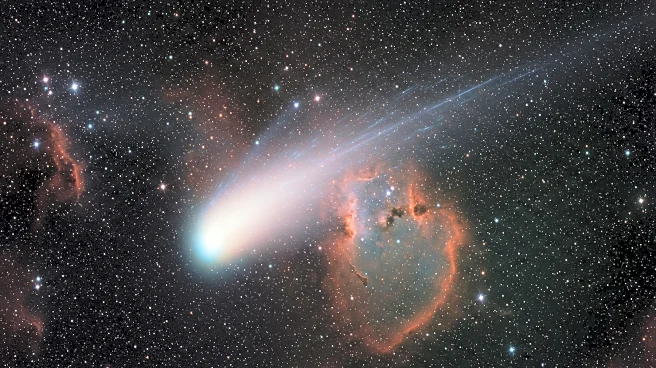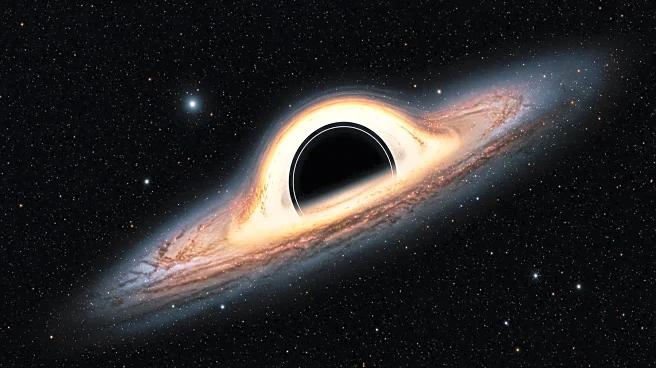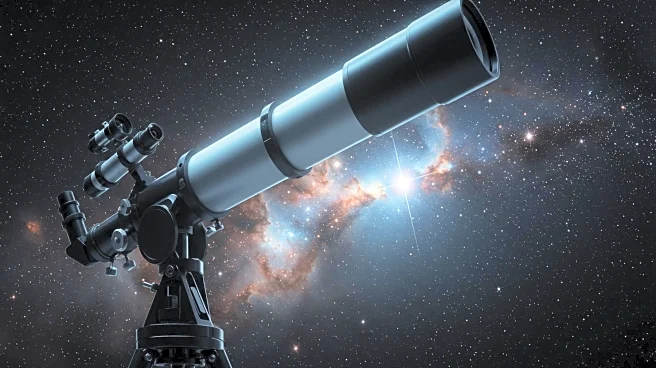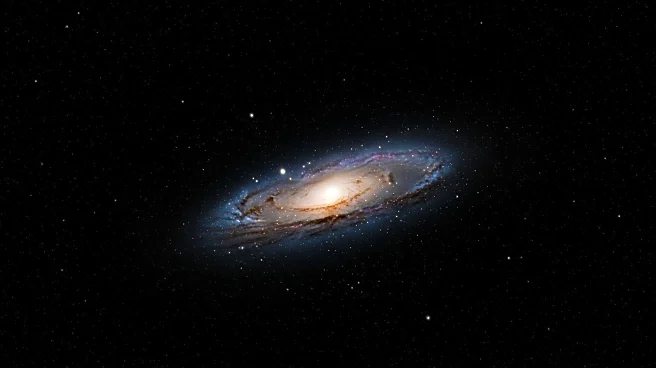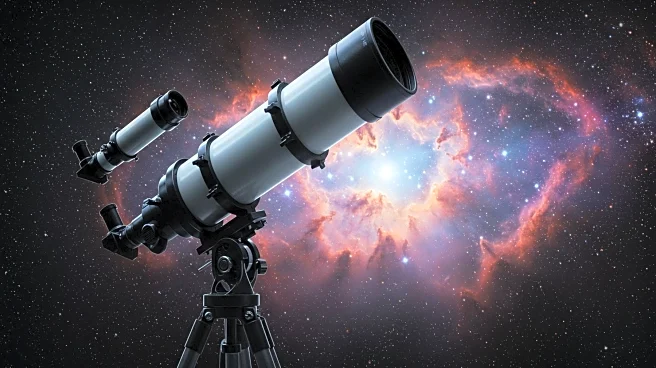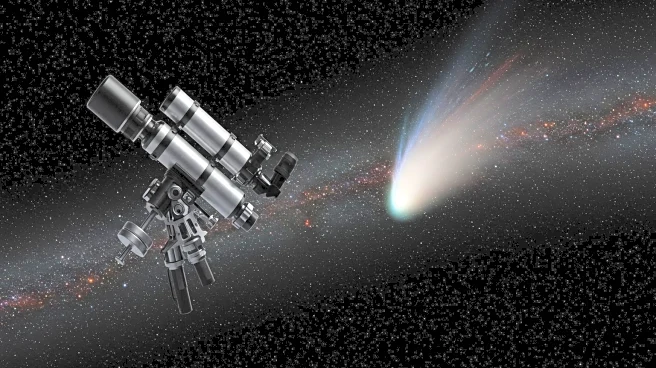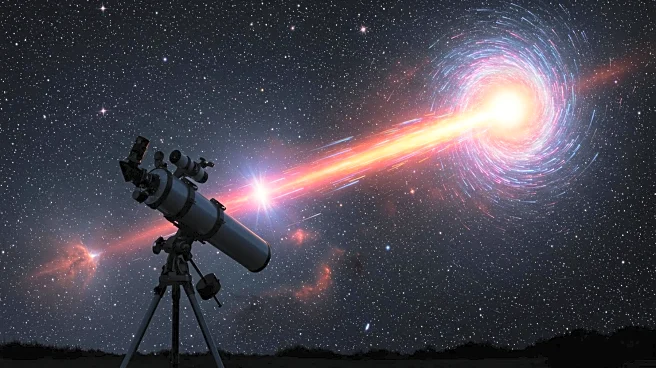What's Happening?
The interstellar comet 3I/ATLAS, discovered beyond Jupiter's orbit, has become a major astronomical sensation. Initially thought to be inactive, it has since exhibited normal cometary activity, forming a coma and tail. Spectroscopic studies reveal it consists mainly of water, hydroxyl ions, carbon dioxide, and carbon monoxide. The comet's high speed and trajectory suggest it originated from the thick disk of the Milky Way, making it older than the Sun.
Why It's Important?
The discovery of 3I/ATLAS adds to the growing list of interstellar objects observed in recent years, highlighting advancements in astronomical technology and observation capabilities. It provides valuable insights into the composition and behavior of comets from outside our solar system, contributing to our understanding of the universe's history and the formation of celestial bodies. The comet's age and origin offer a unique opportunity to study ancient materials from the early universe.
What's Next?
Scientists will continue to study 3I/ATLAS as it passes through the solar system, using powerful astronomical instruments to gather more data. The comet's trajectory will be closely monitored, and further spectroscopic studies may reveal additional information about its composition. Researchers are also preparing for future interstellar visitors, potentially developing missions to study them up close.
Beyond the Headlines
The appearance of 3I/ATLAS has sparked speculation about the possibility of alien probes, though scientific consensus remains that it is a natural comet. The event highlights the intersection of science and public imagination, as well as the role of media in shaping perceptions of astronomical discoveries. It also underscores the importance of critical thinking and scientific rigor in evaluating extraordinary claims.
